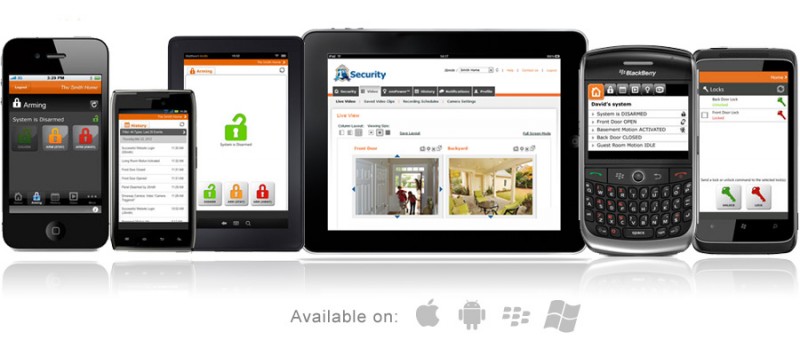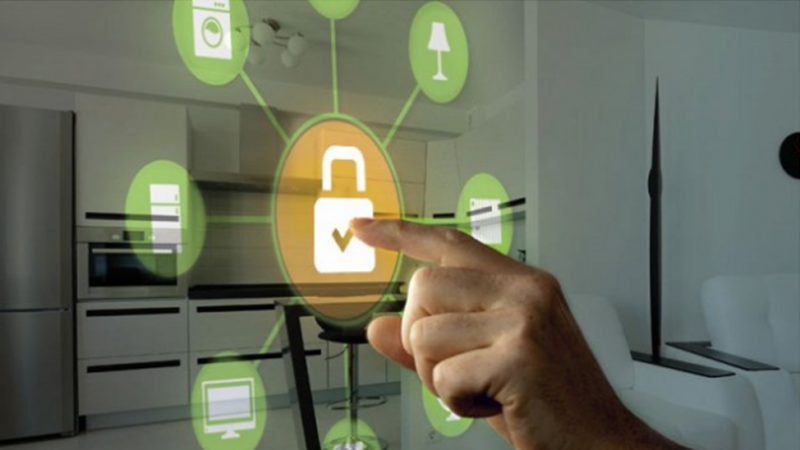Digital Home Security Hits its Stride in 2015
One of the main goals when it comes to home security is to deter thieves from ever breaking and entering in the first place. The sight of a camera or alarm system instantly makes a criminal think that being caught is in the cards, meaning that any deterrent of this type can potentially discourage a thief from breaking and entering. This also means that it’s not necessary for homeowners to seek out costly home security systems when do-it-yourself methods of setting up these types of deterrents are equally effective and much more cost-efficient.
In fact, many of the most up-to-date DIY methods of home security can be done in a single afternoon. Today, the increasingly interconnected nature of many “smart home” security products allows consumers to start small with a few smart/connected products, and slowly build out a more robust system.
Several inexpensive alarm systems are ready to use out of the box. If you go this route, be sure to get an alarm system that will notify the authorities in the event a thief is able to destroy the control panel. The control panel, which controls operation and signals, should be kept separate from the keypad so that a thief cannot destroy it in one fell swoop. The control panel has the ability to inform authorities of an issue, but this is only true if the signal can be sent for a duration of between 45 and 60 seconds. If this signal is interrupted, authorities may never be aware of a break-in. Mounting the control panel inside the bedroom is a wise choice, as your home should be armed against burglars who are likely to strike while you sleep. The control panel can adjust which rooms are fully protected, in the event someone should to go into the kitchen for a late-night snack. These control panels can typically be accessed remotely through the use of mobile apps for additional convenience.

Security cameras are another popular budget security measure. HD-SDI cameras provide high-definition coverage, and can facilitate real-time visibility of your property while you’re away. Bullet cameras are useful for outdoor surveillance to cover wide viewing angles, such as the front yard or driveway. However, if the driveway is long and narrow, dome cameras, which are useful for entryways and hallways, are a good option. If a DVR will be used for recording, as opposed to real-time visibility options, choose a DVR that has multiple channels so that areas that need recording can be expanded for future use. Also, make sure that the recording device has enough memory to accommodate what’s needed.

Installing cameras in certain sheltered areas, such as where the roof meets the exterior walls of the home, is smart in order to protect them from the elements. Cameras can be secured to the exterior and interior of the home with simple drilling, although be sure to use caulking around any holes you make in the walls. Check camera angles and visibility before running cables through walls and other surfaces. Decide the source of monitoring as well. There are a couple of options to supply power to each camera – they can either be plugged directly into an outlet or all lines can be connected to a power supply box. Either option is fine; it all depends on the power supply of your home.
There are a variety of ways to start small with your home security system and build up for greater protection. Getting a home security system with zone expander modules provides a way to improve upon your home’s protection in the future. With use of smart gadgets, it’s easier than ever to view and control the circumstances at home from a remote location. For instance, tablets, computers, laptops, phones and other gadgets are increasingly interconnected via “The Internet of Things.” Nowadays, virtually anything in any location can be monitored at a distance. This makes it easy to add other smart objects to your home security arsenal at a later time, such as digital locks and light timers. This is particularly true as we move toward more open communication standards, and smart devices from different manufacturers can work together whether they use Wi-Fi, Z-Wave, ZigBee, or Bluetooth platforms.

To properly arm a home, think like a criminal. Consider a criminal’s entry point, the ways they’d gain entry into your home, and where they would first look for valuable items or a home security control panel. Even the simplest deterrents work because the benefit of gain is outweighed by the likelihood of being caught. It used to be that a professional installer was needed to place visible security measures such as cameras and alarms. Today, homeowners can tap into the benefits of omnipresent Internet access and safeguard their home and property for themselves.









